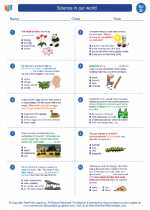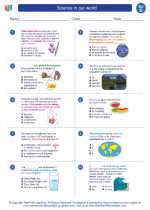Cretaceous-Paleogene Period
The Cretaceous-Paleogene (K-Pg) period, formerly known as the Cretaceous-Tertiary (K-T) period, is a geological time period that spans from approximately 145 million years ago to 66 million years ago. It is known for being the time when the dinosaurs went extinct, marking the end of the Mesozoic Era and the beginning of the Cenozoic Era.
Key Events and Characteristics
- Dinosaurs Extinction: The most notable event of the K-Pg period is the mass extinction of the dinosaurs and many other species. This event is believed to have been caused by a combination of factors, including a massive asteroid impact and volcanic activity.
- Geological Changes: The K-Pg boundary is marked by significant geological changes, including the formation of the Chicxulub crater in modern-day Mexico, which is believed to be the result of the asteroid impact.
- Flowering Plants: The K-Pg period saw the diversification and spread of flowering plants, leading to the development of diverse ecosystems and the evolution of new plant and animal species.
- Marine Life: Many marine species, including ammonites and marine reptiles, also went extinct during this period, while others diversified and evolved to fill the ecological niches left vacant by the extinction event.
Study Guide
If you're studying the Cretaceous-Paleogene period, here are some key points to focus on:
- What are the major events that occurred during the K-Pg period?
- How did the extinction of the dinosaurs impact the Earth's ecosystems?
- What geological evidence supports the theory of an asteroid impact at the K-Pg boundary?
- Describe the changes in plant and animal life during the K-Pg period.
- Discuss the significance of the K-Pg period in the context of Earth's history and the evolution of life on our planet.
Be sure to review the geological, paleontological, and ecological evidence related to the K-Pg period, as well as the theories and hypotheses proposed to explain the mass extinction event that occurred during this time.
Good luck with your studies!
.◂Science Worksheets and Study Guides Fourth Grade. Science in our world
Study Guide Science in our world - 4th gr.
Science in our world - 4th gr.  Worksheet/Answer key
Worksheet/Answer key Science in our world - 4th gr.
Science in our world - 4th gr.  Worksheet/Answer key
Worksheet/Answer key Science in our world - 4th gr.
Science in our world - 4th gr.  Worksheet/Answer key
Worksheet/Answer key Science in our world - 4th gr.
Science in our world - 4th gr.  Vocabulary/Answer key
Vocabulary/Answer key Science in our world - 4th gr.
Science in our world - 4th gr. 

 Worksheet/Answer key
Worksheet/Answer key
 Worksheet/Answer key
Worksheet/Answer key
 Worksheet/Answer key
Worksheet/Answer key
 Vocabulary/Answer key
Vocabulary/Answer key

The resources above cover the following skills:
History and Nature of Science: A student should understand the history and nature of science. A student who meets the content standard should:
Develop an understanding that historical perspectives of scientific explanations demonstrate that scientific knowledge changes over time, building on prior knowledge.
Develop an understanding that scientific knowledge is ongoing and subject to change as new evidence becomes available through experimental and/or observational confirmation(s).